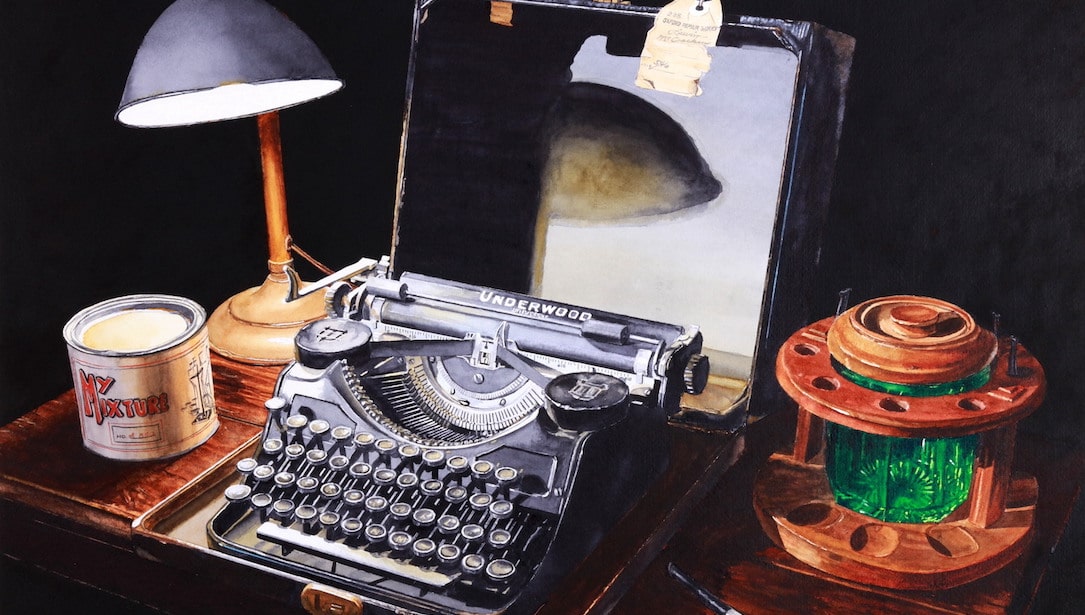Share:
Ian de Hoog shares how he creates his beautiful watercolor art. Here’s a quick Q&A with Ian:
Why do you make art?
With all the distractions day-to-day, I find the process of painting calming and peaceful. That something beautiful sometimes comes out of those times is a bonus.
How long have you been painting?
I started about 10 years ago with a few watercolours at the suggestion of an instructor of an architecture program I was in. Now I’m a working artist.
Did you have formal art training?
Not exactly. Apart from a few workshops over the years I have figured it out mistake after mistake. Still making mistakes and still trying to figure it out.
What inspires you?
Nature primarily – and light.
What kind of music do you listen to while painting?
Many different things from classical to heavy alt rock. Just depends. I will often put on a podcast or an audiobook as well. I also have a tendency to binge series on Netflix in the background while I am painting.
Do you paint every day?
I paint or sketch every day.
Do you paint one piece at a time or work on several at the same time?
Depends. If I have a commission, sometimes I will have a few paintings on the go. Usually I prefer to work through a piece to completion. Often, when I am unsure if a piece is done, I have a little shelf that I put a piece on and it sits there in plain sight until I either realize what needs to be fixed, or I come to terms with it and its done.
Do you create a concept piece first?
For commission work, absolutely. Also, if it is new subject matter I will often create sketches and value studies to work out some ideas so I have a better understanding of what I am going to do once I start painting. It is the unpredictability of watercolour that I find the most endearing, the things I can’t control. In order to exploit this, the less I am trying to figure things out while painting the better I am able to “tune in” to what is happening on the paper.
Do you prefer painting in studio or plein air?
Either. But nothing beats setting up outside on a nice day. Unfortunately, since I live in a area that is prone to a lot of rain, enjoying the studio space is essential.
How many core colours do you use?
Nine – it’s a split primary palette with an earth yellow, earth orange and a dark neutral: Hansa Yellow Medium, New Gamboge, Pyrrol Scarlett, Permanent Alizarin Crimson, French Ultramarine, Phthalo Blue GS, French Ochre, Burnt Sienna Light, Neutral Tint
Tubes, pans or sticks?
Tubes all day long. Never tried sticks.
Do you use masking fluid?
I love the idea of it, but I lack the patience. If required, I will use a little gouache or an white acrylic/gel pen to put a little white back. Otherwise I try my best to preserve white with my brush. I have found this approach helps me focus on developing my brushwork, moisture control and overall appreciation of value.
When do you know that your piece is finished?
Ultimately, when there is nothing left to fix. I have a little shelf that sits just in view of where I paint. Often, when a piece is close to done, or I am not sure what needs to be fixed, the painting gets put on the shelf. Sometimes the painting sits there for a couple hours, sometimes days or weeks. Eventually I either figure out what is needed or I come to terms with what I have done and accept it.
••••••••••
Join us online each week for an Up Close and Personal Conversation with Daniel Smith CEO and Owner, John Cogley and guest artists from around the world. On Thursdays (2:00pm Pacific), John highlights various features of our products and answers your questions. On Fridays (10:30am Pacific), a guest artist follows up to share how they incorporate those features into their art. Click here for the upcoming week’s Zoom links.
Check our Facebook page for news about upcoming guest artists or to watch past replays. Each Zoom meeting is also recorded and shared on our YouTube channel. La traducción al español está disponible – selecciona el canal en español en Zoom.







